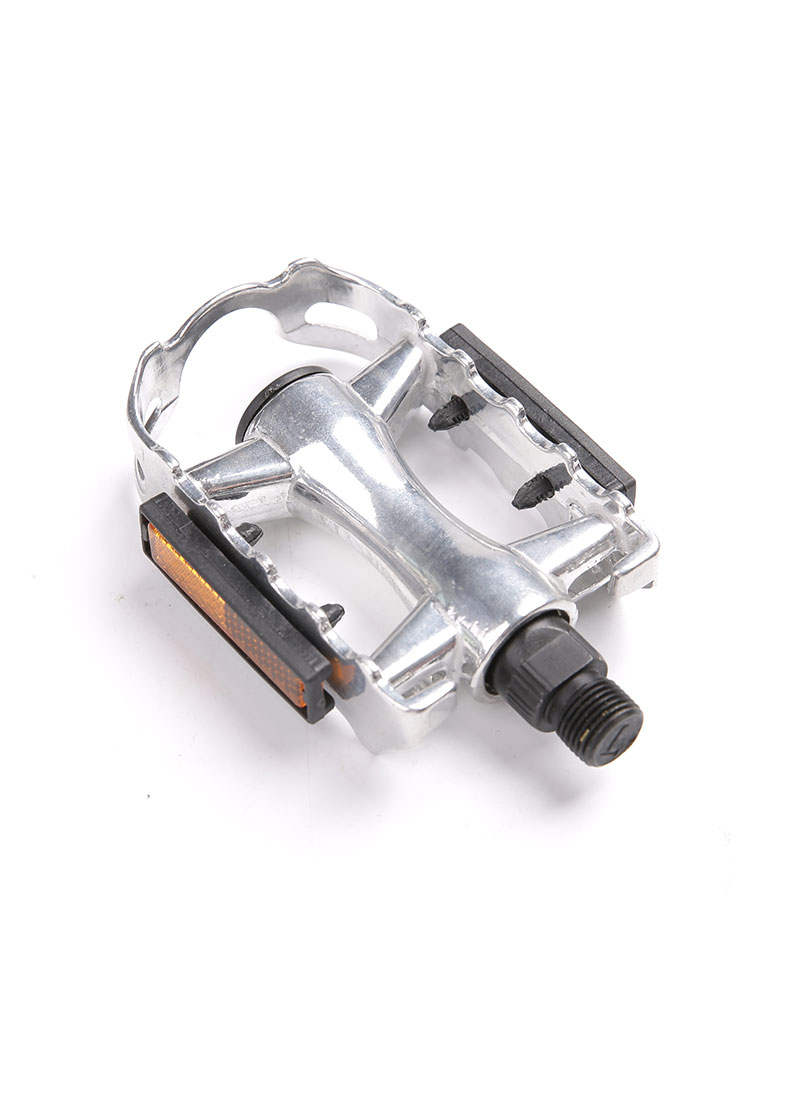Summary:1. Traditional pedalsTraditional pedals are the most common bicycle pedals. You can step on it with any kind of shoes (e...
1. Traditional pedals
Traditional pedals are the most common bicycle pedals. You can step on it with any kind of shoes (even barefoot!). Traditional pedals are usually found in children's bicycles and city cars. Rubber or hard plastic is the most commonly used material for this type of pedal.
(1) Features:
A, easy to use
B. No special requirements for shoes
C, nothing will fix you on the bike
D. You can’t apply upward force to the pedals, that is, you can step on the pedals down, but you cannot pull them up.
E, the feet slip off the pedals easily
2. Advanced pedals
High-end pedals are used for mountain bikes. BMX or so-called "city" bikes refer to a type of bicycles that are mainly used for urban cycling and have no obvious characteristics of road bikes or station wagons. This type of pedal has a feature. There are "tooth" on the pedal, which can increase the friction between the shoe and help your foot to be fixed on the pedal.
(1) Features: Compared with traditional pedals, this pedal provides a better contact surface for the feet, so that the feet are not easy to slip off the pedals. But if your foot slips off the pedal accidentally and the pedal hits your calf, the "teeth" on the pedal will hurt you.
3. Pedal with foot cover
Another major innovation in pedal design is the invention of the foot cover. It first appeared in the 1860s. The obvious advantage of the foot cover over the ordinary pedal is that the rider can drive the pedal in a full circle, that is, it can move downwards. You can lift up while stepping on it. , Foot covers are ideal for commuter cyclists who often walk through the streets and alleys.
(1) Features:
A, easy to use
B. No special requirements for shoes
C, easy to learn
D. Riders can use the power of their legs on the pedals, and while pedaling down, they can lift up and still have a small amount of power loss. The foot cover cannot transmit all the energy provided by the leg when pedaling
4. Dual-purpose pedals-probably the best in both areas
If you want to provide maximum flexibility and don't want to use only self-locking pedals, then having dual-purpose pedals may be the choice of many riders. This kind of pedal is flat on one side and can be stepped on with ordinary shoes. The self-locking on the other side can jam the lock shoes and provide more effective pedaling efficiency. You can wear ordinary shoes when commuting to and from get off work. When riding long distances, wear lock shoes and set off.
5. Self-locking foot pedals
Self-locking pedals allow cyclists to fix their feet and pedals together through special cycling shoes. This ensures the most effective power transmission from the legs to the pedals. The foot rotates 360 degrees with the pedal, so the power can be transmitted when stepping down, or when lifting up.
(1) Features:
A, to maximize the power to the pedal
B, the feeling of being integrated with the bicycle
C, special cycling shoes are required
D. Learning to lock and unlock is quite challenging. It takes a while to remember to unlock before parking. Many people use the self-locking pedal for the first time, at least once at the intersection because they forget to unlock it.
E, the combination of different self-locking pedals and cycling shoes may also have different effects.
Related Products:


